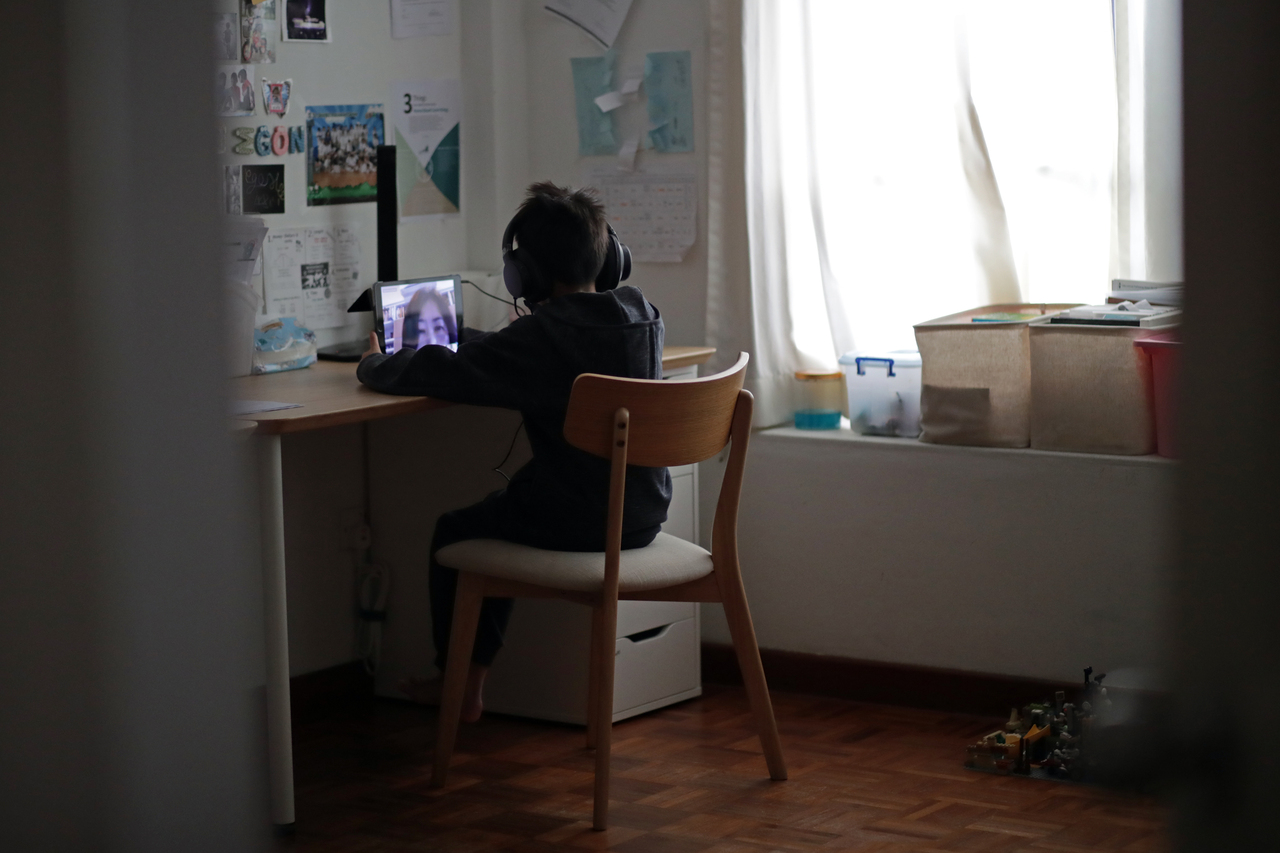Parliament: About 96% of students took part in full home-based learning
Sign up now: Get ST's newsletters delivered to your inbox

Full home-based learning was implemented in line with Singapore's circuit breaker measures.
ST PHOTO: GIN TAY
Follow topic:
SINGAPORE - About 96 per cent of all students took part in the month of full home-based learning, said Second Minister for Education Indranee Rajah in Parliament on Monday (May 4).
"The few who did not participate were largely on medical leave, and those who did not participate persistently were encouraged to return to school," she said, in response to Ms Rahayu Mahzam (Jurong GRC), who had asked how schools assessed whether students have the necessary support at home for home-based learning.
During this period of full home-based learning, about 3,300 primary school pupils and 700 secondary school students returned to school daily for several reasons, said Ms Indranee.
Ms Rahayu had also asked if there were requests from parents for students to attend school during this period which could not be acceded to.
Said Ms Indranee: "Requests from parents for their children to return to school were met, as long as there were genuine needs.
"The challenge has in fact been the opposite, where schools invite the student to come back to school, but the parents were reluctant over various reasons. But schools will continue to try."
Full home-based learning, which started on April 8 and ended on Monday, was implemented in line with Singapore's circuit breaker measures aimed to curb the spread of the coronavirus.
Ms Indranee said schools had also identified a proportion of students who would benefit from returning to school during this period, based on their understanding of the student and his/her family circumstances, parents' requests, and referrals from social workers.
These include students whose parents are in essential services and do not have alternative care-giving arrangements.
These students can also access the limited services offered by school-based Student Care Centres, including students who were not previously enrolled in these centres.
Schools also reached out to students who face significant challenges learning at home, as well as those who require face-to-face support, said Ms Indranee.
"Schools proactively identified these students and encouraged them to return to school, by providing a welcoming environment and additional small-group activities, such as non-contact sports and enrichment modules, while practising safe distancing," she added.
"This has helped them to stay connected and engaged, and maintain a school-going routine."
Another group of students who also needed to go to school were those who lacked digital devices or Internet access at home for their learning.
Ms Indranee said that schools have loaned out more than 20,000 computing devices and 1,600 Internet-enabling devices to date, with some corporate support.
"The numbers coming back to schools for this purpose have dropped significantly since, to a small group whose parents do not wish to (take up the) loan for personal reasons," she added.
The period of full home-based learning has been a learning process for families as well as schools, said Ms Indranee in response to Ms Rahayu's question on the challenges that parents and teachers had faced.
"Certainly the first week, there was quite a lot of adjustment and learning that had to take place, but a couple weeks on... things have more or less stabilised," said Ms Indranee.
"It has gone on much better than we had hoped, but not without challenges."
These challenges include parents needing to learn how to use software for learning while handling work from home, and supporting multiple children, some with special needs.
"No two children are exactly alike. Some have taken to home-based learning very well. Some others need more offline learning," she said, adding that teachers have tried to maintain contact with parents and find solutions together.
For students who need support beyond lessons, school counsellors and social welfare officers have also reached out to them, through phone or video calls or e-mails, she said.
MOE is starting to look at the feedback it has received, she said.
For instance, teachers have highlighted that preparing for lessons carried out remotely is very different from face-to-face learning, as it requires a mix of resources.
"They're also looking at the right balance, because after a while, if it's only pure online learning, children get bored. They need stimulation of other kinds."

